Jeep Grand Cherokee vs Land Rover Range Rover Evoque - Differences and prices compared
Costs and Efficiency:
Price and efficiency are key factors when choosing a car – and this is often where the real differences emerge.
Land Rover Range Rover Evoque has a decisively advantage in terms of price – it starts at 43300 £, while the Jeep Grand Cherokee costs 85600 £. That’s a price difference of around 42343 £.
Fuel consumption also shows a difference: Jeep Grand Cherokee manages with 2.90 L and is therefore clearly perceptible more efficient than the Land Rover Range Rover Evoque with 3.70 L. The difference is about 0.80 L per 100 km.
As for range, the Land Rover Range Rover Evoque performs noticeable better – achieving up to 60 km, about 15 km more than the Jeep Grand Cherokee.
Engine and Performance:
Power, torque and acceleration are the classic benchmarks for car enthusiasts – and here, some clear differences start to show.
When it comes to engine power, the Jeep Grand Cherokee has a distinct edge – offering 380 HP compared to 269 HP. That’s roughly 111 HP more horsepower.
In acceleration from 0 to 100 km/h, the Jeep Grand Cherokee is slightly quicker – completing the sprint in 6.30 s, while the Land Rover Range Rover Evoque takes 7.20 s. That’s about 0.90 s faster.
In terms of top speed, the Land Rover Range Rover Evoque performs slight better – reaching 213 km/h, while the Jeep Grand Cherokee tops out at 210 km/h. The difference is around 3 km/h.
There’s also a difference in torque: Jeep Grand Cherokee pulls to a small extent stronger with 637 Nm compared to 540 Nm. That’s about 97 Nm difference.
Space and Everyday Use:
Beyond pure performance, interior space and usability matter most in daily life. This is where you see which car is more practical and versatile.
Seats: offers more seating capacity – vs .
In curb weight, Land Rover Range Rover Evoque is evident lighter – 1792 kg compared to 2434 kg. The difference is around 642 kg.
In terms of boot space, the Jeep Grand Cherokee offers minimal more room – 520 L compared to 472 L. That’s a difference of about 48 L.
In maximum load capacity, the Jeep Grand Cherokee performs clearly better – up to 2004 L, which is about 848 L more than the Land Rover Range Rover Evoque.
When it comes to payload, Jeep Grand Cherokee hardly perceptible takes the win – 641 kg compared to 600 kg. That’s a difference of about 41 kg.
Who comes out on top?
Overall, the Jeep Grand Cherokee shows itself to be offers a more balanced package and secures the title of DriveDuel Champion.
It convinces with the more balanced overall package and proves to be the more versatile choice for everyday use.
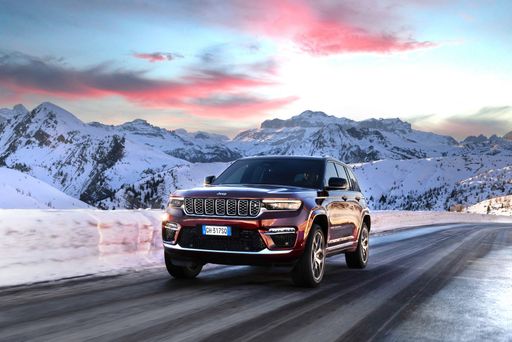 @ Jeep / Stellantis Media
@ Jeep / Stellantis Media
Jeep Grand Cherokee
Costs and Consumption
View detailed analysis
Engine and Performance
View detailed analysis
Dimensions and Body
View detailed analysis
Jeep Grand Cherokee
The Jeep Grand Cherokee wears its trail-ready roots proudly while wrapping them in a surprisingly civilized and upscale package, so it can tackle rough tracks and the school run with the same swagger. Inside, plush materials and intuitive tech make it a comfortable place to spend time, giving buyers a practical yet characterful SUV that doesn’t take itself too seriously.
details @ Jeep / Stellantis Media
@ Jeep / Stellantis Media
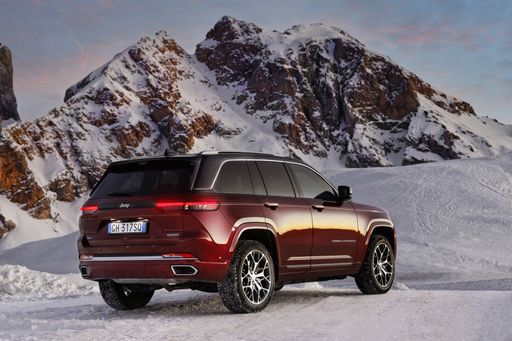 @ Jeep / Stellantis Media
@ Jeep / Stellantis Media
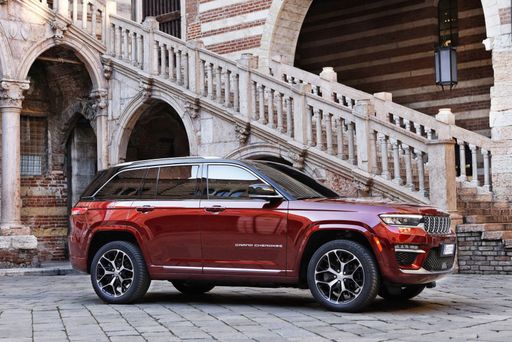 @ Jeep / Stellantis Media
@ Jeep / Stellantis Media
 @ Jeep / Stellantis Media
@ Jeep / Stellantis Media
Land Rover Range Rover Evoque
The Range Rover Evoque turns heads with a compact, sculpted silhouette and an interior that feels more boutique hotel than utility vehicle. It delivers composed, playful handling around town while keeping enough ruggedness for weekend escapes — perfect for buyers who want luxury without the ostentation.
details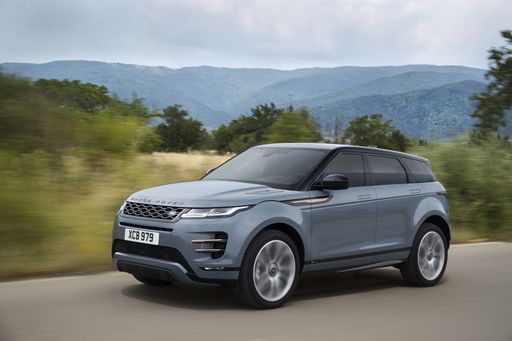 @ Jaguar Land Rover Media
@ Jaguar Land Rover Media
 @ Jaguar Land Rover Media
@ Jaguar Land Rover Media
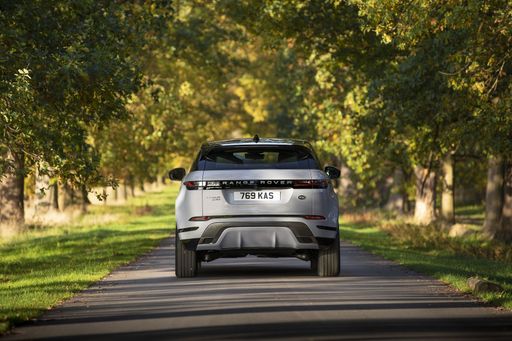 @ Jaguar Land Rover Media
@ Jaguar Land Rover Media
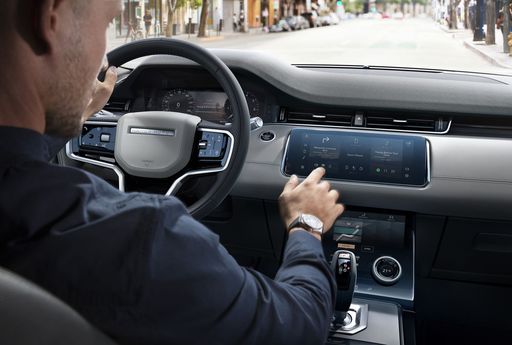 @ Jaguar Land Rover Media
@ Jaguar Land Rover Media
 @ Jeep / Stellantis Media
@ Jeep / Stellantis Media
|
 @ Jaguar Land Rover Media
@ Jaguar Land Rover Media
|
|
|
|
Costs and Consumption |
|
|---|---|
|
Price
85600 £
|
Price
43300 - 64800 £
|
|
Consumption L/100km
2.90 L
|
Consumption L/100km
3.7 - 7.8 L
|
|
Consumption kWh/100km
-
|
Consumption kWh/100km
-
|
|
Electric Range
45 km
|
Electric Range
60 km
|
|
Battery Capacity
-
|
Battery Capacity
11.50 kWh
|
|
co2
65 g/km
|
co2
85 - 177 g/km
|
|
Fuel tank capacity
72 L
|
Fuel tank capacity
57 - 67 L
|
Dimensions and Body |
|
|---|---|
|
Body Type
SUV
|
Body Type
SUV
|
|
Seats
5
|
Seats
5
|
|
Doors
5
|
Doors
5
|
|
Curb weight
2434 kg
|
Curb weight
1792 - 2157 kg
|
|
Trunk capacity
520 L
|
Trunk capacity
472 L
|
|
Length
4914 mm
|
Length
4371 mm
|
|
Width
1968 mm
|
Width
1900 mm
|
|
Height
1858 mm
|
Height
1649 mm
|
|
Max trunk capacity
2004 L
|
Max trunk capacity
1156 L
|
|
Payload
641 kg
|
Payload
503 - 600 kg
|
Engine and Performance |
|
|---|---|
|
Engine Type
Plugin Hybrid
|
Engine Type
Petrol MHEV, Diesel MHEV, Plugin Hybrid
|
|
Transmission
Automatic
|
Transmission
Manuel, Automatic
|
|
Transmission Detail
Automatic Gearbox
|
Transmission Detail
Manual Gearbox, Automatic Gearbox
|
|
Drive Type
All-Wheel Drive
|
Drive Type
Front-Wheel Drive, All-Wheel Drive
|
|
Power HP
380 HP
|
Power HP
160 - 269 HP
|
|
Acceleration 0-100km/h
6.30 s
|
Acceleration 0-100km/h
7.2 - 10.3 s
|
|
Max Speed
210 km/h
|
Max Speed
190 - 213 km/h
|
|
Torque
637 Nm
|
Torque
260 - 540 Nm
|
|
Number of Cylinders
4
|
Number of Cylinders
3 - 4
|
|
Power kW
280 kW
|
Power kW
118 - 198 kW
|
|
Engine capacity
1995 cm3
|
Engine capacity
1498 - 1998 cm3
|
General |
|
|---|---|
|
Model Year
2024
|
Model Year
2025
|
|
CO2 Efficiency Class
B
|
CO2 Efficiency Class
G, F, B
|
|
Brand
Jeep
|
Brand
Land Rover
|
Is the Jeep Grand Cherokee offered with different drivetrains?
Available configurations include All-Wheel Drive.
The prices and data displayed are estimates based on German list prices and may vary by country. This information is not legally binding.
